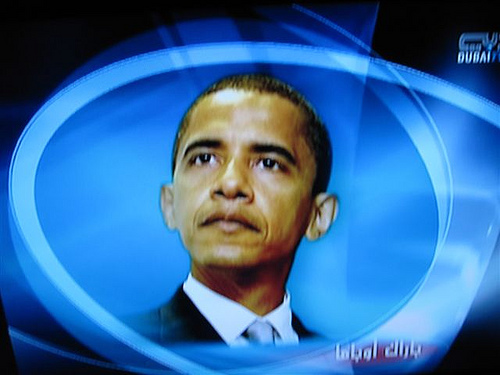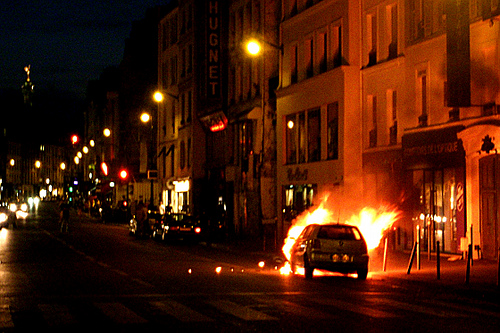Let me start this with an anecdote. A story from Reddit once recounted an event where a man was walking down the street followed closely by his girlfriend, who was crying, trying to drag him back, and clearly upset. All of a sudden, he turned around and hit her. This was witnessed by multiple men. These men then proceeded to beat the man half to death.
Now have a look at this video.
Again, the social stigma regarding violence against women is apparent. But when the situation is reversed, nobody comes to the aid of the male. This tells us several things. This tells us that female violence against males is not considered to be equivalent to male violence against women. In such a situation, the male has no recourse to expect any kind of help, or any defence. Ironically, this is the very definition of violence – the man is rendered completely helpless, and is expected to endure such violence without complaint. Other people, particularly males, appear unwilling or hesitant to defend the male under assault – perhaps they are influenced by the prospect of being accused of violence against women if they try to defend the male, and the prospect of violence being inflicted upon them as a result.
Importantly, it is an example of how many women feel empowered to act more aggressively, even violently, in private and in public, because society either excuses or even encourages their behaviour. For males, the scope of normal masculine behaviour they are allowed to exhibit is increasingly diminished in Western society. The situations in which aggression and violence are acceptable from males is greatly diminished, so that when they are presented with a situation in which violence is permitted, such as when they see a man hitting a woman, the violence comes out disproportionately, like a burst geyser.
Thus, even with a brief look at identity politics in modern Western society, we can see there are mixed and hypocritical messages given to both genders regarding what kinds of violence and what levels of violence are acceptable. Now consider this quote from Barack Obama:


“It is time to heed the words of Gandhi: “Intolerance is itself a form of violence and an obstacle to the growth of a true democratic spirit.”
Any proceeding claim that this does not condone violence is a non sequitur. It means that if you say something which is deemed to be racist, sexist, homophobic, transphobic, Islamiphobic, etc, or support a political party or candidate who is deemed to be so, that violence is a proportionate response. It means that when words or ideas labelled intolerant can be presented as threatening, or violent, or make “minorities” feel that they are being threatened with violence, even though no threat has been made, that violence is a legitimate response.
It is due to this (il)logic that Black Lives Matter activists feel justified in violently intimidating Milo Yiannopolous at an event at DePaul University in the US. It is why a feminist feels she has the right to yell and swear at a person who disagrees with her. It is why a student feels they can scream and swear at a University Chancellor for suggesting that we should be able to discuss ideas, even if we consider them to be bigoted. It is why anti-Trump protestors feel justified in assaulting people leaving Trump rallies.
It is how the statistics can be ignored, so the narrative of police brutality against black people can be maintained: statistics show that although disproportionately more black people are killed by police because they commit a disproportionate level of crime, white people are proportionally more likely to be shot by police for committing a crime (and in overall numbers, more white people are shot by police); implying that proportionally, police are more cautious when confronting black criminals due to concerns over racial tensions.
It is why, therefore, we argue that Barack Obama has blood on his hands. His public doublespeak – quoting Ghandi but justifying violence – inflames the racial tensions which led to the shooting of five police officers in Dallas. If intolerance is violence, violence is a proportionate and legitimate response to anything which is deemed intolerant. In essence, if you identify yourself as a member of an oppressed minority, you are allowed to react violently to anything that offends you or makes you uncomfortable.
Thus, the political sphere has been infantilised.
A similar dynamic is at play here in Australia. 20 years ago when Pauline Hanson burst onto the political scene, left-wing activists violently picketed and harassed the grandparents who tried to go to her One Nation meetings. In recent times, violent left-wing activists have assaulted and intimidated ordinary Australians, regardless of colour or creed, who tried to articulate concerns about Islam at the Reclaim Australia Rallies.
We see the irony that when the direct threat is made by the Grand Mufti of Australia, that criticism of an Islamic cleric who advocates violence against homosexuals will encourage terrorism, (i.e., if you criticise Islam, we’ll kill you) and Andrew Bolt is forced, due to the threat of violence, to move his children to a safe location after pointing out that this due to violence being threatened against him, Bolt is seen as the intolerant one.
We see the irony that XYZ contributor Ryan Fletcher can be bashed for wearing a “rapefugees” t-shirt because it is deemed intolerant, when in fact the t-shirt is pointing out the despicable actions of “refugees” in Europe who have caused a precipitous rise in rape and sexual assault across Europe – a situation which even left-wing activists who have been themselves raped by “refugees” are not prepared to see as it actually is, and have covered up the crimes against themselves because they consider the potential for backlash against the “refugees” to be worse.
If we are being honest, we can see that the left has a history of violence, because it deems the things it sets itself against, whether it is capitalism, patriarchy, inequality, etc., to be inherently violent – thus they have felt justified for generations, whether in protests, union disputes, etc, in exercising political violence. (This article could perhaps be called “More of the Same: Left-wing political violence”). On a macro level, this is why we see a disproportionate focus on crimes of Western colonialism, national socialist Germany, or American foreign policy during Cold War, yet ignore or forget the much greater crimes of Islamic war, conquest and colonialism, and the crimes of Communist regimes in the Twentieth century: violence to the point of genocide is excusable if you are deemed to be oppressed, or the ideas or systems you purport to oppose are deemed intolerant, and thus structurally violent.
What this means for the coming years in the West, is that we can expect violence on the part of the left to increase, both in volume and intensity. Violent opposition against Trump and his supporters in the US, against those concerned about immigration and the authoritarianism of the EU in Europe, and those expressing similar concerns here in Australia, (especially now that political parties explicitly articulating these concerns have been elected to parliament) will only get worse. What we can do is continue to fight politically and culturally. We can turn their own arguments on their heads, to show that the way they wield the labels of “racism,” “bigotry” and “intolerance” are themselves ideological constructions. We can demonstrate that they have been socially conditioned to react in ways which are out of all proportion to the supposed provocation or violence they believe is being directed against them.
Ultimately, we need to delegitimise the political violence committed by the left. To do this, we first need to delegitimise the ideological construct that whatever the left opposes is inherently violent, and demonstrate that it is consistently the left which initiates violence.










